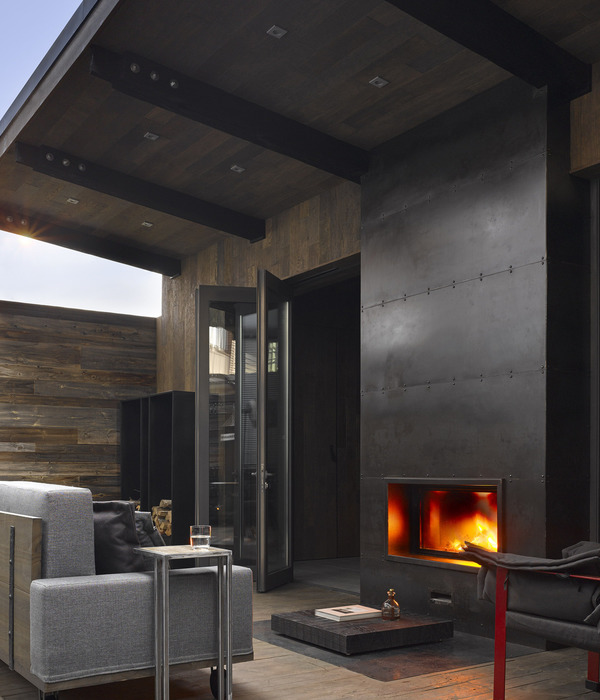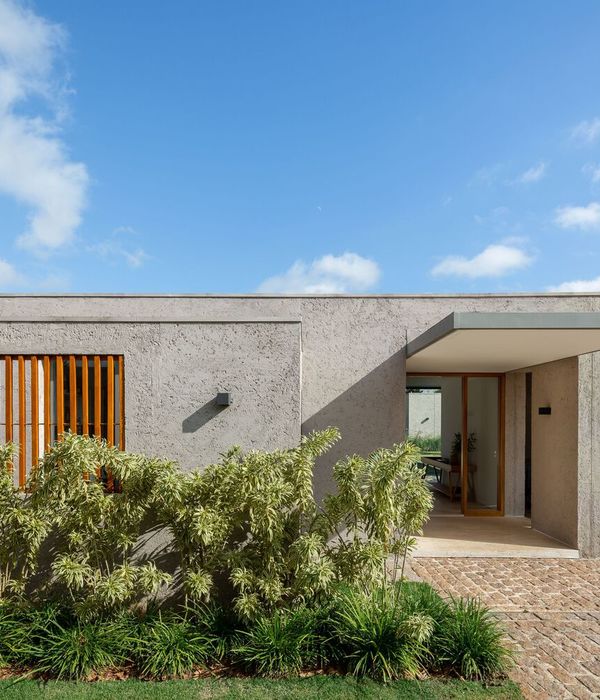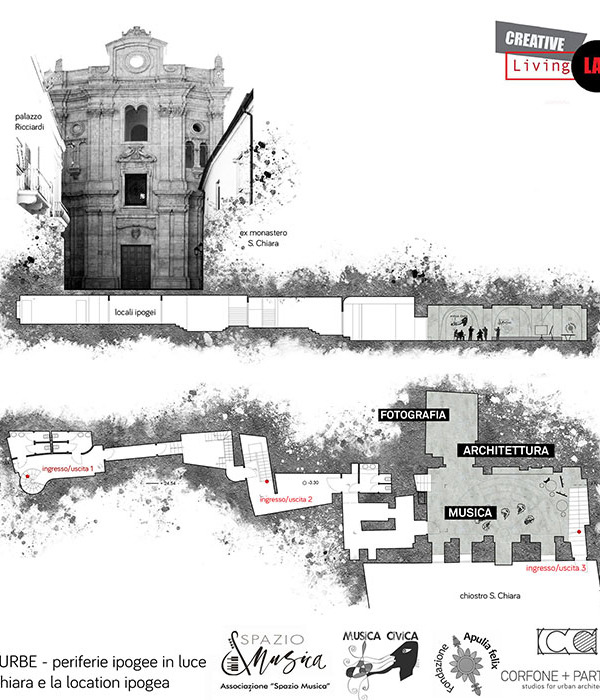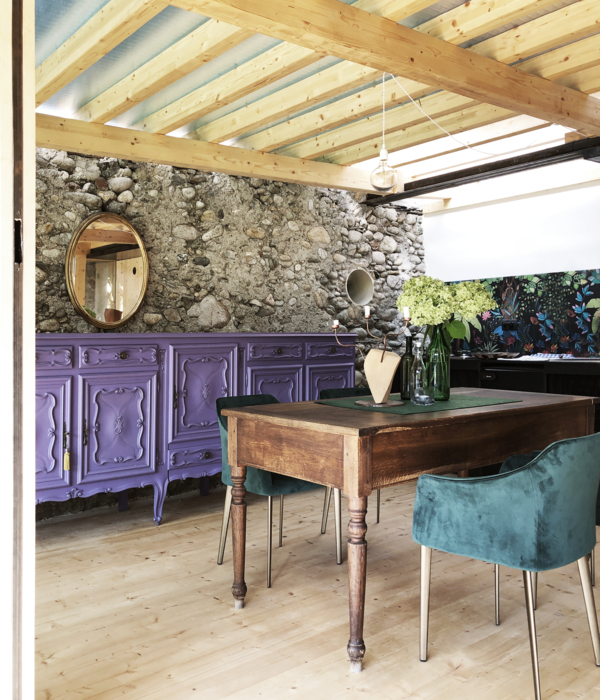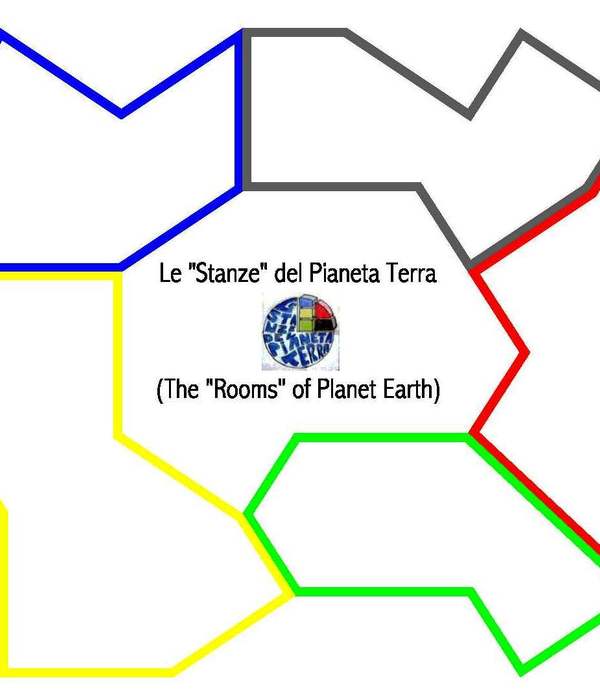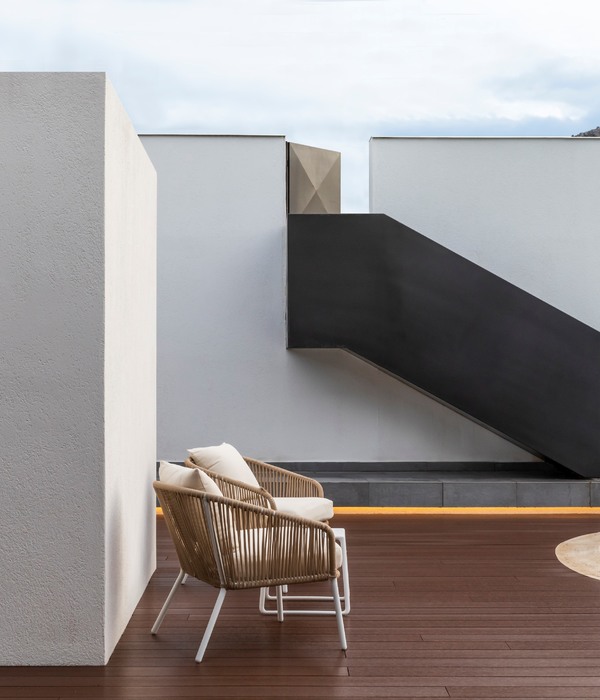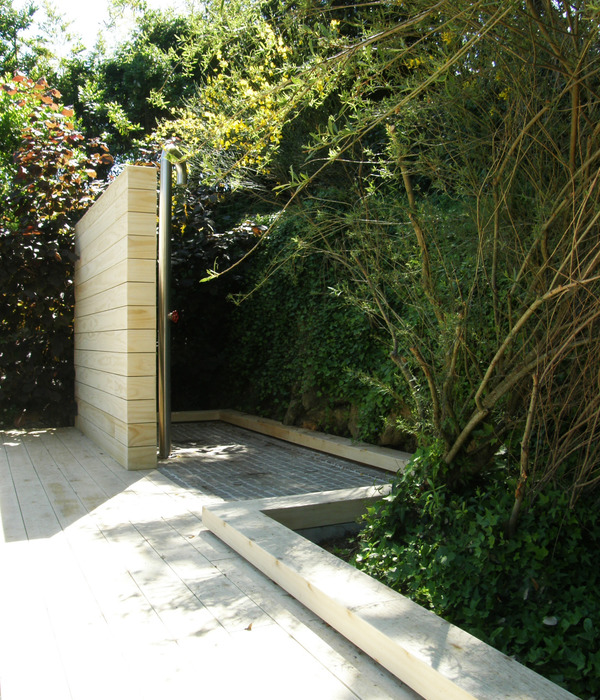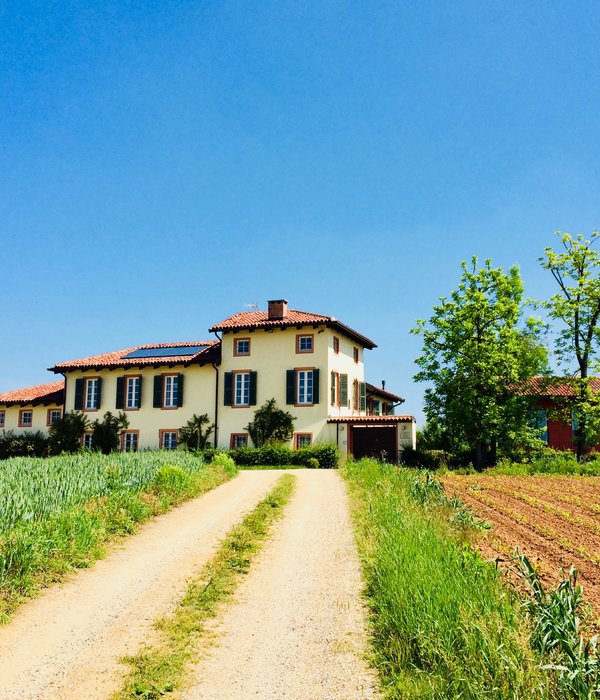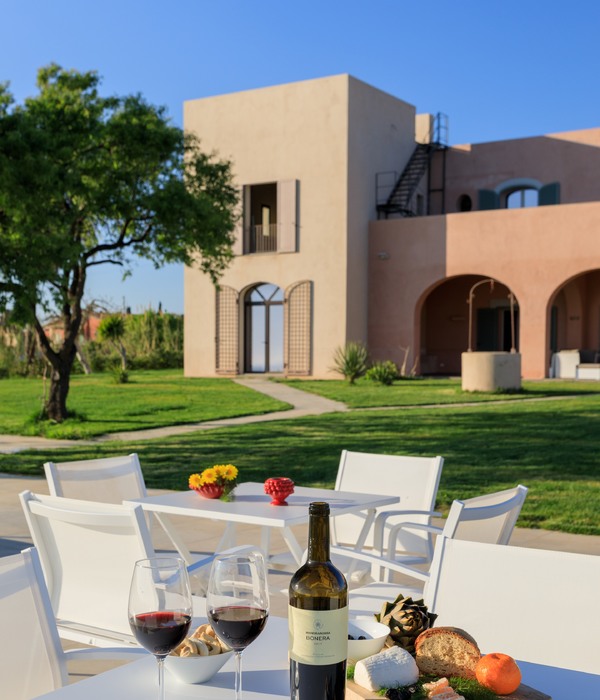Salento Moderno is a book surveying unique private houses in Southern Puglia designed in the post-war period. Photography: Antonio Ottomanelli
A survey of eccentric houses in Southern Puglia is the topic of a new photographic book organised by the Capo d’Arte and an editorial team of Italian academics, curators, researchers and photographers. The so-called ‘Salento Moderno’, the unique neo-vernacular of spontaneous and aesthetically anarchic houses built since the 1950s in the Salento area, is documented and explored through photographs and essays.
一项对普利亚南部古怪房屋的调查是由卡波德阿尔特和一个由意大利学者、策展人、研究人员和摄影师组成的编辑团队组织的一本新的摄影书的主题。所谓的“塞伦托现代”,独特的新方言的自发和美学无政府主义的房屋建造自20世纪50年代以来在萨伦托地区,是记录和探索通过照片和散文。
These houses caught the attention of Italy when they were the topic of an online story by a national Italian newspaper in 2014. The story was followed by a flurry of comments on whether the houses were ‘horror shows’ in the landscape, kitsch in a good way, or kitsch in a bad way.
2014年,这些房子成为意大利一家全国性报纸在线报道的主题,引起了意大利的关注。故事结束后,人们纷纷评论这些房子究竟是风景中的“恐怖秀”,还是好地方的媚俗,还是糟糕的媚俗。
The cover of Salento Moderno
现代现代派的封面
‘Those images, with their long list of comments, inevitably influenced what we intended to do and what we would actually do over the years to come,’ writes editor Davide Giannella in the book, former director of Capo d’Arte – the art foundation is located on Salento Moderno territory in Gagliano del Capo, the last town on the No.16 Adriatica state road, which ends in Santa Maria di Leuca.
编辑达维德·詹尼拉(Davide Giannella)在书中写道:“这些图片,以及它们长长的评论列表,不可避免地影响了我们打算做什么,以及我们在未来几年里会做什么。”该艺术基金会位于加利亚诺·德尔卡波(Gagliano Del Capo)的塞伦托·摩尔诺(Salento Mono),这是亚得里亚卡州路16号的最后一座城镇。最后是圣玛丽亚·迪·利卡。
‘I still remember feeling outraged while looking at those weird façades and golden doors. But then we realised there was a whole world, a society, a soul behind those choices, and that they were worth investigating,’ says Francesco Petrucci, founder and current director at Capo d’Arte.
“我还记得在看着那些奇怪的恶魔和金门时感到愤怒,但后来我们意识到,有一个世界,一个社会,一个在这些选择背后的灵魂,他们值得调查,”CapoD'Arte的创始人兼现任董事FrancescoPetitucci说。
The editors of Salento Moderno, wanted to present a new way of seeing these houses. The team – made up of Massimo Torrigiani, Capo d’Arte director; Davide Giannella, curator; Matteo Poli, architect and professor at Polytechnic in Milan; Antonio Russo, professor; Selva Barni, photo editor; and three photographers Emanuele Colombo, Allegra Martin and Antonio Ottomanelli – began gathering their evidence, and thinking about how this phenomenon should be understood.
塞伦托·摩登的编辑们想要展示一种新的方式来看待这些房子。该团队由Capo d‘Arte导演马西莫·托里塔尼(Massimo Tordriani)、馆长戴维斯·詹尼拉(Davide Giannella)、米兰理工学院建筑师兼教授马泰奥·波利(Matteo Poli)、教授安东尼奥·拉索(Antonio Russo)、照片编辑塞尔瓦·巴尔尼(Selva Barni)和三名摄影师伊曼纽尔·科伦坡(Emanuele科伦坡)、阿莱格拉·马丁(Allegra Martin)和安东尼奥·
While the houses are disconnected to the established modern movement of the 20th century in style, the curators reveal how this discontinuity with tradition, is what makes them ‘modern’. Their chromatic variation, amongst traditional white houses, and bold décor leaves them decontextualised in the landscape. This hybridity emerged from the experience of emigration relevant to a large proportion of the Salentino population following the Second World War – and hybridity in turn became their defining style.
虽然这些房屋在风格上与20世纪确立的现代运动脱节,但策展人揭示了这种与传统的不连续性是如何使它们“现代化”的。他们的色彩变异,在传统的白宫,大胆的装饰,使他们在景观中解构。这种杂合产生于第二次世界大战后与大部分塞伦蒂诺人有关的移民经历,而杂合又成为他们的决定性风格。
‘We have spotted common stylistic features within every village – each had their “signature*; the use of limestone, the round windows, the tympana. But I think that the most important thing these professionals have in common is definitely encouraging their clients to break the models and therefore assert their own presence and identity,’ says Petrucci.
“我们发现每个村庄都有共同的风格特征-每个村庄都有自己的”签名“;使用石灰石、圆形窗户和鼓室。但我认为,这些专业人士最重要的共同之处,肯定是鼓励他们的客户打破模型,从而维护自己的存在和身份。”
Built in concrete and re-used materials and designed mostly by local chartered building surveyors, the houses are products of the 20th century, yet the curators trace them by various routes to Greek-Roman and Arabic structures, the baroque and the local vernacular of agricultural masserie, palazzos and old country houses that were converted into residential dwellings.
这些房屋是用混凝土和重复使用的材料建造的,主要由当地特许建筑测量师设计,是20世纪的产物,但策展人通过各种途径将它们追溯到古希腊-罗马和阿拉伯建筑、巴洛克风格和当地方言的农家聚居区、宫殿和被改造成住宅的旧乡间住宅。
In line with the academic credentials of the team, research for the publication was organised and methodical: ‘We divided the region in quarters, and wandered in the villages’ outskirts, taking, pictures, notes, addresses. A few months later, the whole team was divided in three groups, each of them with a photographer, a contributor and a producer. And each day, the groups were reassembled and haunting a different area. It’s not a thorough repertory of course, and we still bump into “Salento Moderno houses” that unfortunately we didn’t find before,’ says Petrucci.
根据研究小组的学术资格,对该出版物的研究是有组织的和有条不紊的:“我们把这个地区划分成几个区,然后在村庄的郊区闲逛,拍照片、做笔记、发表演说。”几个月后,整个团队被分成三组,每组都有一名摄影师、一名撰稿人和一名制片人。每一天,这些团体都会重新集结,在不同的地区游荡。这当然不是一个彻底的剧目,我们仍然碰到了“塞伦托现代之家”,不幸的是,我们以前没有找到这些房子,佩特鲁西说。
The houses are designed mostly by local chartered building surveyors. Photography: Allegra Martin
这些房屋主要是由当地特许建筑测量师设计的。摄影:Allegra Martin
Photographs by Emanuele Colombo, Allegra Martin and Antonio Ottomanelli capture the houses’s exteriors from the street, framing them with roads, pathways, neighbouring buildings and the sky – a deliberate choice to provide a standard for comparison and future study. The photographs record all the details that typify the buildings, including ‘round windows, optical tiles, statues, asymmetric roofs, flashy colours, columns, gables and tympana’.
由伊曼纽尔·科伦坡(Emanuele科伦坡)、阿莱格拉·马丁(Allegra Martin)和安东尼奥·奥托马内利(Antonio Ottomanelli)拍摄的照片从街道上捕捉到了房屋的外观,用道路、小径、邻近建筑和天空为它们设置了框架-这些照片记录了所有典型的建筑细节,包括“圆形窗户、光学瓷砖、雕像、不对称屋顶、艳丽的色彩、柱子、山墙和鼓鼓”。
The essays between the photographs in Italian and translated English, pull out strands of visual analysis, discussion and sentiment. Matteo Poli writes of the ‘daring’ and ‘joyful’ nature of Salento Moderno, while Massimo Torrigiani asks, ‘What separates the beautiful from the repulsive, the deplorable from the commendable?’ §
文章之间的照片以意大利语和翻译的英语,拉出一股视觉分析,讨论和情感。Matteo Poli写到了Salento Modino的“大胆”和“快乐”性质,而Massimo Torrineani则问:“美丽和令人厌恶的区别是什么,可悲的和值得赞扬的区别是什么?”
摄影:Allegra Martin摄影:Allegra Martin
摄影:Antonio Ottomanelli摄影:Antonio Ottomanelli
{{item.text_origin}}

